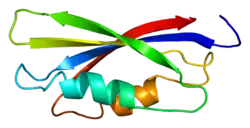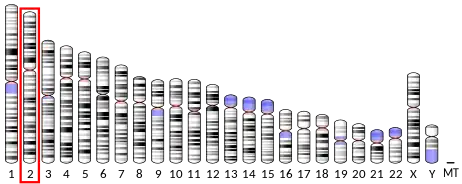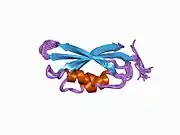| EEF1B2 | |||||||||||||||||||||||||||||||||||||||||||||||||||
|---|---|---|---|---|---|---|---|---|---|---|---|---|---|---|---|---|---|---|---|---|---|---|---|---|---|---|---|---|---|---|---|---|---|---|---|---|---|---|---|---|---|---|---|---|---|---|---|---|---|---|---|
 | |||||||||||||||||||||||||||||||||||||||||||||||||||
| |||||||||||||||||||||||||||||||||||||||||||||||||||
| Identifiers | |||||||||||||||||||||||||||||||||||||||||||||||||||
| Aliases | EEF1B2, EEF1B, EEF1B1, EF1B, eukaryotic translation elongation factor 1 beta 2 | ||||||||||||||||||||||||||||||||||||||||||||||||||
| External IDs | OMIM: 600655 MGI: 1929520 HomoloGene: 1480 GeneCards: EEF1B2 | ||||||||||||||||||||||||||||||||||||||||||||||||||
| |||||||||||||||||||||||||||||||||||||||||||||||||||
| |||||||||||||||||||||||||||||||||||||||||||||||||||
| |||||||||||||||||||||||||||||||||||||||||||||||||||
| |||||||||||||||||||||||||||||||||||||||||||||||||||
| |||||||||||||||||||||||||||||||||||||||||||||||||||
| Wikidata | |||||||||||||||||||||||||||||||||||||||||||||||||||
| |||||||||||||||||||||||||||||||||||||||||||||||||||
Elongation factor 1-beta is a protein that in humans is encoded by the EEF1B2 gene.[5][6]
Function
This gene encodes a translation elongation factor. The protein is a guanine nucleotide exchange factor involved in the transfer of aminoacylated tRNAs to the ribosome. Alternative splicing results in three transcript variants which differ only in the 5' UTR.[6]
Interactions
EEF1B2 has been shown to interact with EEF1G[7][8] and HARS.[9]
References
- 1 2 3 ENSG00000283391 GRCh38: Ensembl release 89: ENSG00000114942, ENSG00000283391 - Ensembl, May 2017
- 1 2 3 GRCm38: Ensembl release 89: ENSMUSG00000025967 - Ensembl, May 2017
- ↑ "Human PubMed Reference:". National Center for Biotechnology Information, U.S. National Library of Medicine.
- ↑ "Mouse PubMed Reference:". National Center for Biotechnology Information, U.S. National Library of Medicine.
- ↑ Pizzuti A, Gennarelli M, Novelli G, Colosimo A, Lo Cicero S, Caskey CT, Dallapiccola B (Nov 1993). "Human elongation factor EF-1 beta: cloning and characterization of the EF1 beta 5a gene and assignment of EF-1 beta isoforms to chromosomes 2,5,15 and X". Biochemical and Biophysical Research Communications. 197 (1): 154–62. doi:10.1006/bbrc.1993.2454. PMID 8250921.
- 1 2 "Entrez Gene: EEF1B2 eukaryotic translation elongation factor 1 beta 2".
- ↑ Rual JF, Venkatesan K, Hao T, Hirozane-Kishikawa T, Dricot A, Li N, Berriz GF, Gibbons FD, Dreze M, Ayivi-Guedehoussou N, Klitgord N, Simon C, Boxem M, Milstein S, Rosenberg J, Goldberg DS, Zhang LV, Wong SL, Franklin G, Li S, Albala JS, Lim J, Fraughton C, Llamosas E, Cevik S, Bex C, Lamesch P, Sikorski RS, Vandenhaute J, Zoghbi HY, Smolyar A, Bosak S, Sequerra R, Doucette-Stamm L, Cusick ME, Hill DE, Roth FP, Vidal M (Oct 2005). "Towards a proteome-scale map of the human protein-protein interaction network". Nature. 437 (7062): 1173–8. Bibcode:2005Natur.437.1173R. doi:10.1038/nature04209. PMID 16189514. S2CID 4427026.
- ↑ Stelzl U, Worm U, Lalowski M, Haenig C, Brembeck FH, Goehler H, Stroedicke M, Zenkner M, Schoenherr A, Koeppen S, Timm J, Mintzlaff S, Abraham C, Bock N, Kietzmann S, Goedde A, Toksöz E, Droege A, Krobitsch S, Korn B, Birchmeier W, Lehrach H, Wanker EE (Sep 2005). "A human protein-protein interaction network: a resource for annotating the proteome". Cell. 122 (6): 957–68. doi:10.1016/j.cell.2005.08.029. hdl:11858/00-001M-0000-0010-8592-0. PMID 16169070. S2CID 8235923.
- ↑ Sang Lee J, Gyu Park S, Park H, Seol W, Lee S, Kim S (Feb 2002). "Interaction network of human aminoacyl-tRNA synthetases and subunits of elongation factor 1 complex". Biochemical and Biophysical Research Communications. 291 (1): 158–64. doi:10.1006/bbrc.2002.6398. PMID 11829477.
Further reading
- Rasmussen HH, van Damme J, Puype M, Gesser B, Celis JE, Vandekerckhove J (Dec 1992). "Microsequences of 145 proteins recorded in the two-dimensional gel protein database of normal human epidermal keratinocytes". Electrophoresis. 13 (12): 960–9. doi:10.1002/elps.11501301199. PMID 1286667. S2CID 41855774.
- Hochstrasser DF, Frutiger S, Paquet N, Bairoch A, Ravier F, Pasquali C, Sanchez JC, Tissot JD, Bjellqvist B, Vargas R (Dec 1992). "Human liver protein map: a reference database established by microsequencing and gel comparison". Electrophoresis. 13 (12): 992–1001. doi:10.1002/elps.11501301201. PMID 1286669. S2CID 23518983.
- von der Kammer H, Klaudiny J, Zimmer M, Scheit KH (May 1991). "Human elongation factor 1 beta: cDNA and derived amino acid sequence". Biochemical and Biophysical Research Communications. 177 (1): 312–7. doi:10.1016/0006-291X(91)91984-K. PMID 1710449.
- Sanders J, Maassen JA, Amons R, Möller W (Aug 1991). "Nucleotide sequence of human elongation factor-1 beta cDNA". Nucleic Acids Research. 19 (16): 4551. doi:10.1093/nar/19.16.4551. PMC 328648. PMID 1886777.
- Bec G, Kerjan P, Zha XD, Waller JP (Dec 1989). "Valyl-tRNA synthetase from rabbit liver. I. Purification as a heterotypic complex in association with elongation factor 1". The Journal of Biological Chemistry. 264 (35): 21131–7. doi:10.1016/S0021-9258(19)30056-0. PMID 2556394.
- Wolfson AD, Orlovsky AF, Gladilin KL (Oct 1988). "Mammalian valyl-tRNA synthetase forms a complex with the first elongation factor". FEBS Letters. 238 (2): 262–4. doi:10.1016/0014-5793(88)80492-7. PMID 3169261. S2CID 45934458.
- Chen CJ, Traugh JA (Dec 1995). "Expression of recombinant elongation factor 1 beta from rabbit in Escherichia coli. Phosphorylation by casein kinase II". Biochimica et Biophysica Acta (BBA) - Gene Structure and Expression. 1264 (3): 303–11. doi:10.1016/0167-4781(95)00166-2. PMID 8547318.
- Béhar G, Coleclough C, Houlgatte R, Auffray C, Lefkovits I (1996). "Human lymphocyte cDNA ordered library analyzed by 2D gel electrophoresis. 3. Analysis of individual clones". Applied and Theoretical Electrophoresis. 5 (2): 99–105. PMID 8573604.
- Sanders J, Brandsma M, Janssen GM, Dijk J, Möller W (May 1996). "Immunofluorescence studies of human fibroblasts demonstrate the presence of the complex of elongation factor-1 beta gamma delta in the endoplasmic reticulum". Journal of Cell Science. 109 ( Pt 5) (5): 1113–7. doi:10.1242/jcs.109.5.1113. hdl:1854/LU-01GJAXGWEXX2G4TPB1AKB720BQ. PMID 8743958.
- Sheu GT, Traugh JA (Dec 1997). "Recombinant subunits of mammalian elongation factor 1 expressed in Escherichia coli. Subunit interactions, elongation activity, and phosphorylation by protein kinase CKII". The Journal of Biological Chemistry. 272 (52): 33290–7. doi:10.1074/jbc.272.52.33290. PMID 9407120.
- Sheu GT, Traugh JA (Jan 1999). "A structural model for elongation factor 1 (EF-1) and phosphorylation by protein kinase CKII". Molecular and Cellular Biochemistry. 191 (1–2): 181–6. doi:10.1023/A:1006802125856. PMID 10094407. S2CID 775166.
- Pérez JM, Siegal G, Kriek J, Hård K, Dijk J, Canters GW, Möller W (Feb 1999). "The solution structure of the guanine nucleotide exchange domain of human elongation factor 1beta reveals a striking resemblance to that of EF-Ts from Escherichia coli". Structure. 7 (2): 217–26. doi:10.1016/S0969-2126(99)80027-6. PMID 10368288.
- Chambers DM, Rouleau GA, Abbott CM (Oct 2001). "Comparative genomic analysis of genes encoding translation elongation factor 1B(alpha) in human and mouse shows EEF1B1 to be a recent retrotransposition event". Genomics. 77 (3): 145–8. doi:10.1006/geno.2001.6626. PMID 11597139.
- Sang Lee J, Gyu Park S, Park H, Seol W, Lee S, Kim S (Feb 2002). "Interaction network of human aminoacyl-tRNA synthetases and subunits of elongation factor 1 complex". Biochemical and Biophysical Research Communications. 291 (1): 158–64. doi:10.1006/bbrc.2002.6398. PMID 11829477.
- Cans C, Passer BJ, Shalak V, Nancy-Portebois V, Crible V, Amzallag N, Allanic D, Tufino R, Argentini M, Moras D, Fiucci G, Goud B, Mirande M, Amson R, Telerman A (Nov 2003). "Translationally controlled tumor protein acts as a guanine nucleotide dissociation inhibitor on the translation elongation factor eEF1A". Proceedings of the National Academy of Sciences of the United States of America. 100 (24): 13892–7. Bibcode:2003PNAS..10013892C. doi:10.1073/pnas.2335950100. PMC 283517. PMID 14623968.
- Beausoleil SA, Jedrychowski M, Schwartz D, Elias JE, Villén J, Li J, Cohn MA, Cantley LC, Gygi SP (Aug 2004). "Large-scale characterization of HeLa cell nuclear phosphoproteins". Proceedings of the National Academy of Sciences of the United States of America. 101 (33): 12130–5. Bibcode:2004PNAS..10112130B. doi:10.1073/pnas.0404720101. PMC 514446. PMID 15302935.
- Ito T, Marintchev A, Wagner G (Sep 2004). "Solution structure of human initiation factor eIF2alpha reveals homology to the elongation factor eEF1B". Structure. 12 (9): 1693–704. doi:10.1016/j.str.2004.07.010. PMID 15341733.
This article is issued from Wikipedia. The text is licensed under Creative Commons - Attribution - Sharealike. Additional terms may apply for the media files.




